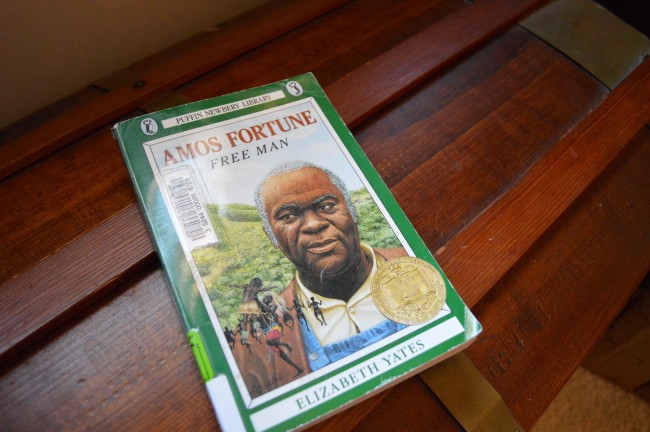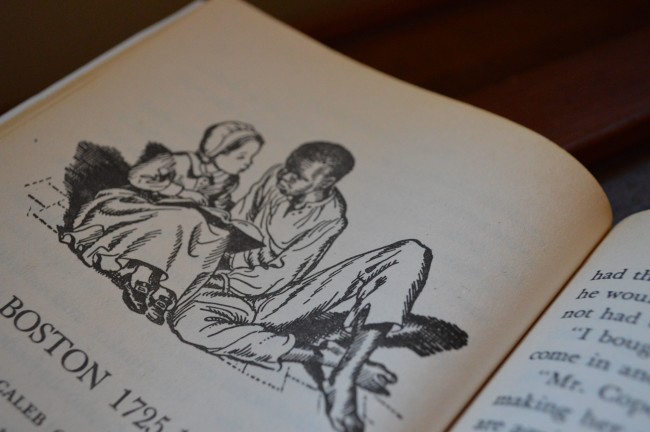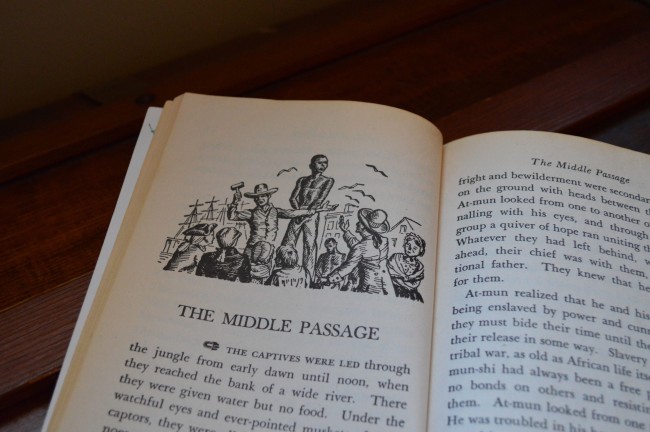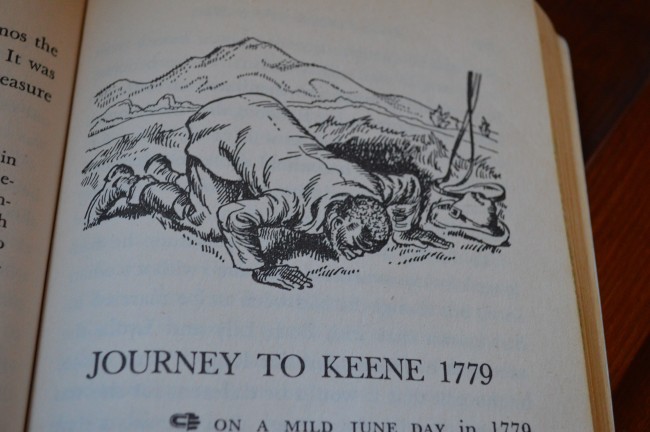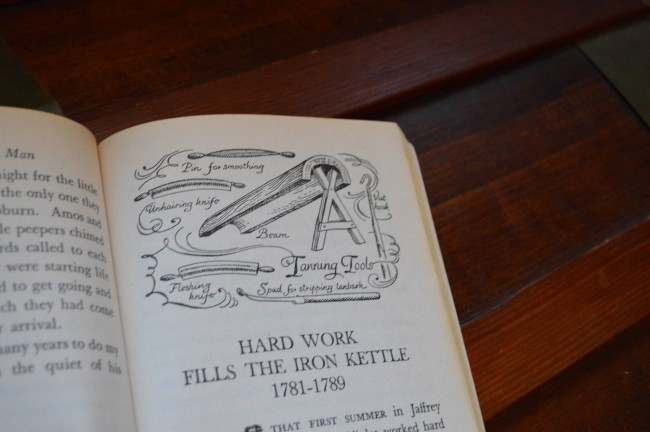Our 30th Newbery is a biographical novel: the 1951 book Amos Fortune, Free Man, by Elizabeth Yates. Taking her title from his gravestone in Jaffrey, New Hampshire, Yates traces and expands upon the real life of an amazing gold coast slave through his various owners, wives, and employments until his death in 1801 at age 91. Yates, and others who have written about Amos Fortune, use manumissions, labor agreements, purchase papers, apprenticeship agreements, business receipts, wills, and estate accounts to piece together the remarkable life of this man. (If you are interested in looking at these documents check out Amos Fortune The Man and His Legacy by Peter Lambert a free online source book.)
Personally, for me as a child of the 1980s, I grew up on a steady diet of books and classes that sought to allow children to connect to the life of slaves, so this book is easy to overlook for how extraordinary it was for its time. The first 30 Newberies scarcely represent the true nature of the U.S. during that time, which certainly was multicultural (there are Newbery exceptions like Waterless Mountain and a number of Newberies set in “exotic” locations, but these often do more harm than good with their portrayal of the exotic). While this is not the most graphic account of the middle passage or slavery (Amos is rather fortunate to be in the north and be bought by Quakers who treat him more like family than most slaves who ended up on plantations in the south at that time), it’s still a gentle, but real, introduction for young readers that sets out a significant amount of the injustice and frustration of both enslaved and free 18th century African Americans.
This is our first Newbery about an African American, our first Newbery that really addresses slavery in any significant way. Ironically, the genre of slave narratives was not new for the 1950s; actually a century before in the 1850s, slave narratives were extremely popular and a way for abolitionists to gain support (like the Narrative of the Life of Frederick Douglass). But a children’s book in the 1950s about a slave is definitely a change for the Newbery winners. And the fact that Amos Fortune is an 18th century slave who left a trail of documents behind him is certainly unique in both his experiences and our ability to study them.
What I liked. While I loved a lot of things about this book, one of my favorite parts was toward the end when Amos has a conflict with his third wife over some money. Amos has dedicated many of his adult years to earning enough money for his own freedom, and then in turn worked to free 3 different women he would then marry, two of whom died within a year of their hard-bought freedom. The last wife, Violet, who outlives Amos, has a young daughter who Amos adopts and the three of them move to their own land for Amos to run his tannery. A poor family in the area catches Amos’ eye, and he is moved to give them all the money that he had been saving. Well, Violet is none too pleased about this. To force Amos to think over what it would mean for his family to give away all their savings, Violet buries the money in the woods. Amos, very angry, goes up into the mountains to pray. There is a really beautiful passage there about freedom and choice, responsibility and relationship, prayer and marriage that I was really surprised by.
What was interesting. I loved all the details about 18th century tanning; Yates clearly did her research here.
What were some limitations. Sometimes the pacing seemed a bit rushed. We’d have a chapter take a week of his life, and then skip over 15 years in a few sentences. I’d have liked the book to be longer, and for Yates to have developed more of his early years.
What it teaches me as a writer. It’s amazing to me how continuing to put your main characters in a string of obstacles when they are good-natured, even if they have only a few small victories, can feel so satisfying to the reader. I often find that I want to protect my protagonist, but I need to trust that she, like Amos Fortune, is strong enough to face the obstacles with hope and perseverance, and in the end the triumph will be sweeter for them.
Have you read Amos Fortune, Free Man? What are your favorite books about slavery?
*Note* This post contains Amazon affiliate links, which means if you were to buy a book, I’d get a tiny commission at no cost to you. Thanks for supporting Stories & Thyme!*

